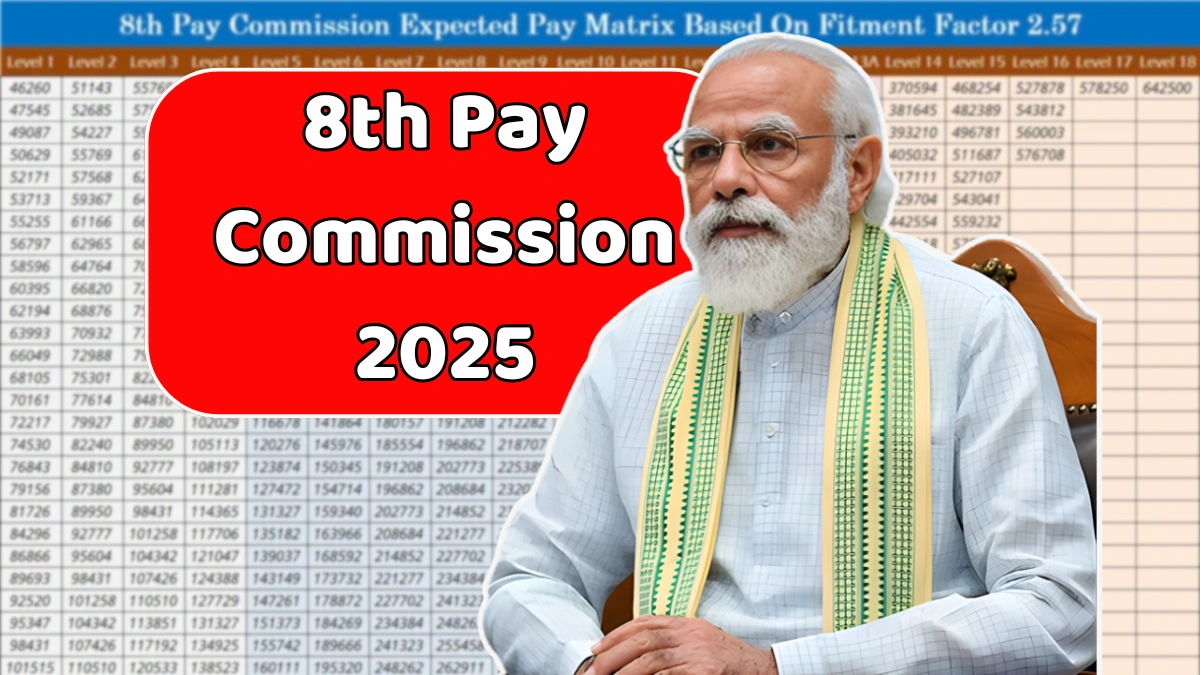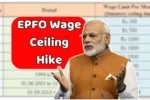Imagine walking into your government office one morning, only to realize that your salary hasn’t kept pace with the soaring prices of groceries, rent, and daily essentials. For over 50 lakh Central Government employees and 60 lakh pensioners, that frustration may soon fade. The 8th Central Pay Commission (CPC), approved in January 2025, promises to bring long-awaited financial relief — not just in numbers, but in restoring dignity and purchasing power eroded by inflation.
Approval Sparks Hope Across India
On January 16, 2025, just ahead of Budget 2025, the Union Cabinet, led by Prime Minister Narendra Modi, formally approved the constitution of the 8th Pay Commission. This historic move signals the government’s commitment to ensuring fair, inflation-adjusted compensation for its workforce.
While the final Terms of Reference (ToR) and committee appointments are expected by October 2025, groundwork and departmental restructuring will continue until December 2025. The Commission’s recommendations are likely to take effect from January 1, 2026, with arrears anticipated for any delays.
For millions of government workers, this announcement has rekindled optimism — a sense that their years of service will once again be rewarded in real terms.
Fitment Factor: The Engine Behind the Hike
At the heart of every Pay Commission lies one key figure — the Fitment Factor, which determines the revised basic pay.
The 7th CPC in 2016 had fixed the multiplier at 2.57, translating into a significant pay rise then. For 2025, experts predict a fitment factor between 1.83 and 2.86, depending on fiscal capacity and inflation benchmarks. Employee unions, however, are lobbying for 3.68, citing rising costs and stagnant wage growth.
Here’s what that could look like in real terms:
| Pay Level | 7th CPC Basic (₹) | Expected 8th CPC (Fitment 2.86) | Approx. Hike |
|---|---|---|---|
| Level 1 | ₹18,000 | ₹50,000 | +177% |
| Level 5 | ₹29,200 | ₹75,000 | +157% |
| Level 10 | ₹56,100 | ₹1,44,000 | +157% |
| Level 15 | ₹1,00,000 | ₹2,57,000 | +157% |
Such revisions could transform household budgets — enabling vacations, education funding, and better healthcare access for middle-class employees.
Unions have also proposed revisiting the Aykroyd Formula, ensuring that the pay structure reflects actual consumption and inflation trends, not just economic projections.
Allowances and Pensions: Double Gains Ahead
The 8th CPC is not only about salary hikes — it’s also about revamping allowances and pensions for a more holistic impact.
- Dearness Allowance (DA), which stands at 58% as of July 2025, will reset to zero once merged into the new basic pay.
- House Rent Allowance (HRA) may increase to 27% in metros, ensuring that high-rent urban living remains affordable.
- Travel Allowance (TA), medical benefits, and risk allowances are also under review for enhancement.
- Pensioners and family pensioners will see proportionate increases, ensuring post-retirement comfort without financial strain.
- Defense personnel and ex-servicemen are expected to gain parallel revisions, maintaining parity across central services.
This structural uplift ensures that no section of the workforce — active or retired — is left behind.
Implementation Challenges: Hope Meets Reality
Despite the enthusiasm, implementation hurdles loom large. The Budget 2025 did not allocate dedicated funds for the Pay Commission rollout, sparking concerns of delays until 2027 or 2028.
However, history offers hope: the 7th CPC arrears were also released retroactively, ensuring that employees eventually received every rupee owed. The National Council (JCM) and staff unions have demanded greater transparency and timely ToR finalization, urging the government to fast-track approvals by late 2025.
While the timeline may stretch, the eventual payoff — both financially and emotionally — remains substantial.
A Promise of Dignity and Renewal
The 8th Pay Commission is more than a bureaucratic exercise — it’s a statement of trust between the government and its workforce.
Come 2026, clerks, teachers, and technical staff may finally see their financial aspirations realized. Pensioners could enjoy their evenings without worrying about expenses, and younger employees might finally dream of owning homes or funding startups.
With India’s GDP expanding steadily, this reform marks a renewed cycle of economic inclusion — where the public servant’s paycheck once again reflects the nation’s progress.
Conclusion: The 8th Central Pay Commission (CPC) embodies hope — for fair wages, for inflation relief, and for renewed motivation across India’s administrative and defense systems. While procedural delays may test patience, the rewards promise to be transformative.
As the new salary structures unfold in 2026, millions will finally feel their wallets — and their morale — rise together.
Disclaimer: This article is for informational purposes only and is based on publicly available data and official updates as of October 2025. Readers are advised to follow official notifications from the Ministry of Finance and the Department of Expenditure for finalized 8th CPC details.






